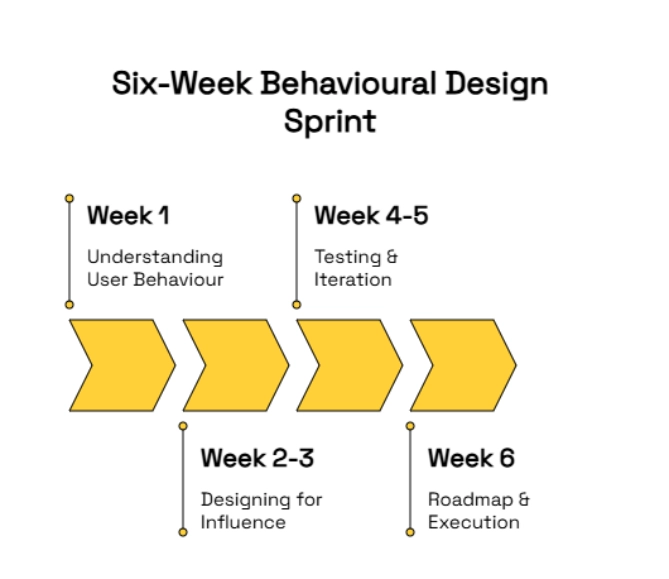
Behavioural Design
Unlock Behavioral Insights, Shape Decisions, Drive Engagement
People don’t make decisions based on logic alone. From buying products to engaging with services, our choices are shaped by cognitive biases, emotional triggers, and subconscious habits. Businesses that ignore this reality struggle to connect with their audience, while those that leverage behavioral design create solutions that truly resonate and drive action.
At TPA, we integrate behavioural science, cognitive psychology, and design thinking to craft experiences that align with how people naturally think and act. We help you build products, services, and strategies that not only meet functional needs but also tap into the motivations that influence behaviour.

Why Behavioral Design Matters
Even the best solutions fail if they don’t align with how people behave. Organisations often face challenges like:
- Users dropping off despite great product functionality
- Low engagement and poor conversion rates
- Complex decision-making processes that overwhelm customers
- A disconnect between product value and customer perception
Traditional design focuses on features. Behavioural design focuses on people, ensuring your product, service, or communication is built for real-world decision-making. By applying insights from Robert Cialdini and Nobel laureates Daniel Kahneman and Richard Thaler, we craft solutions that naturally guide users toward desired actions.

Our Approach: Behavioural Design in Action
Our structured methodology combines research, psychology, and rapid iteration to create solutions that drive real change. We use a six-week sprint process to identify behavioural barriers and opportunities, then design interventions that improve engagement and decision-making.
Week 1: Understanding User Behaviour
- Deep-dive into customer decision-making patterns
- Identify cognitive biases affecting user interactions
- Conduct stakeholder interviews and behavioural research
Week 2-3: Designing for Influence
- Apply persuasion techniques (Cialdini’s Principles, Fogg Behaviour Model, Hook Model)
- Develop prototypes that incorporate nudges, heuristics, and incentives
- Create low-fidelity wireframes and test behavioural interventions
Week 4-5: Testing & iteration
- Conduct A/B tests and user experiments
- Analyse how biases (loss aversion, social proof, FOMO) impact engagement
- Optimise interventions for maximum effectiveness
Week 6: Roadmap & Execution
- Deliver a validated behavioural design strategy
- Provide a high-fidelity prototype incorporating key insights
- Develop an action plan for scaling and implementation

Who Benefits from Behavioural Design?
Our approach is ideal for:
- Product teams & UX designers aiming to optimise engagement and conversion
- Marketers & growth teams looking to apply psychology-driven persuasion techniques
- Business leaders & founders seeking to create habit-forming products and services
- Service designers working to improve user journeys and interactions
What You Gain
- A behaviorally optimised product or service that increases engagement and retention
- Data-backed insights on how users think, decide, and act
- A structured process for implementing behavioural science in your business
- A clear, actionable roadmap for long-term impact
Let’s Build for Real-world Decision-Making
Your users are not purely rational, they are human. Let’s design solutions that acknowledge this reality. At TPA, we apply behavioural design principles to turn complexity into clarity, intent into action, and ideas into habit-forming experiences.
Book a 30-minute discovery session to explore how behavioural design can drive impact for your business.



